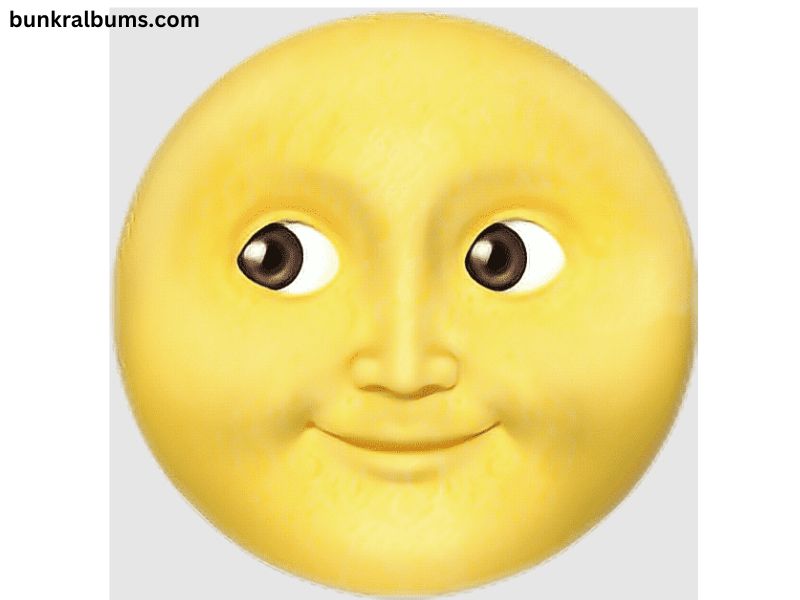In the digital age, emojis have transformed the way we communicate, adding nuance and emotion to our messages. Among the wide array of emojis available, the moon phases, particularly the “Current Phase of the Moon” emoji, hold a unique place in both digital expression and cultural significance. This article explores the various aspects of the Current Phase of the Moon emoji, including its meaning, usage, cultural significance, and the science behind lunar phases.
The Basics of the Moon Phases Emoji
The Current Phase of the Moon emoji typically depicts the moon in its present phase, reflecting the lunar cycle’s natural rhythm. Represented by a simple yet elegant graphic, this emoji allows users to convey a range of emotions, moods, and even ideas related to the moon’s influence.
Symbolism and Meaning
The moon has long been a symbol of mystery and femininity across various cultures. Its phases—new, waxing, full, and waning—are often associated with different emotional states and human experiences:
- New Moon: Symbolizes new beginnings, introspection, and potential. It’s a time for setting intentions and contemplating future endeavors.
- Waxing Moon: Represents growth and development. As the moon increases in light, it reflects the nurturing of ideas and projects.
- Full Moon: A symbol of culmination, illumination, and heightened emotions. It’s often associated with creativity and clarity.
- Waning Moon: Represents reflection and letting go. It’s a period for releasing what no longer serves us and preparing for renewal.
The Current Phase of the Moon emoji allows users to communicate these complex feelings succinctly. For instance, someone might post the full moon emoji to express excitement or a desire for celebration.
Usage in Digital Communication
In today’s social media landscape, the Current Phase of the Moon emoji serves various purposes. Users employ it in posts, stories, and messages to convey personal experiences or to connect with others through shared interests in astrology, nature, or simple aesthetics.
Contextual Applications
- Astrology and Spirituality: The moon holds a significant place in astrological practices. Many enthusiasts use the emoji to mark astrological events or personal rituals aligned with the lunar phases. A full moon might prompt a post about a full moon ritual or a reflection on personal growth.
- Nature and Photography: Photographers and nature lovers often share images of the night sky alongside the Current Phase of the Moon emoji to emphasize the beauty of the moon in its current state. It serves as a reminder of the wonders of nature and encourages others to appreciate their surroundings.
- Mood Indicator: The emoji can also serve as a mood indicator. Users might choose the emoji that matches their current emotional state—using the new moon to indicate a fresh start or the full moon during times of excitement.
- Cultural References: In literature and art, the moon has been a longstanding motif. Sharing the Current Phase of the Moon emoji can be a nod to poetic or artistic influences, connecting modern digital expression with historical and cultural themes.
The Cultural Significance of the Moon
The moon’s cultural significance extends far beyond its physical presence in the night sky. Throughout history, it has inspired art, mythology, and folklore across the globe.
Mythology and Folklore
Many cultures have myths that revolve around the moon, attributing various powers and traits to it:
- Greek Mythology: The moon was personified as the goddess Selene, often depicted riding a chariot across the night sky. Her phases symbolized the cycles of life, love, and fertility.
- Chinese Culture: The moon is celebrated during the Mid-Autumn Festival, symbolizing reunion and harvest. The moon’s fullness signifies abundance and harmony in family relationships.
- Native American Traditions: Many tribes have moon calendars that align with their agricultural practices, marking important times for planting and harvesting.
These cultural narratives enrich our understanding of the moon’s significance and underscore its role as a connector of humanity across time and space.
Influence on Art and Literature
The moon has been a muse for countless artists and writers. From the haunting melodies of classical music to the evocative imagery in poetry, the moon evokes feelings of nostalgia, longing, and introspection. Notable works include:
- “To the Lighthouse” by Virginia Woolf: The moon plays a significant role in this novel, representing change and the passage of time.
- Vincent van Gogh’s “Starry Night”: This iconic painting features a vibrant moon that illuminates the swirling night sky, capturing the artist’s emotional connection to nature.
The Current Phase of the Moon emoji can serve as a modern-day homage to these cultural references, bridging digital communication with timeless artistic expression.
The Science Behind Lunar Phases
Understanding the lunar phases provides a scientific backdrop to the emotional and cultural symbolism associated with the Current Phase of the Moon emoji. The moon goes through a complete cycle approximately every 29.5 days, resulting in different appearances that reflect its position relative to the Earth and the Sun.
The Lunar Cycle Explained
- New Moon: The moon is between the Earth and the Sun, making it invisible from Earth. This phase is often associated with new beginnings and introspection.
- Waxing Crescent: A sliver of light begins to appear as the moon moves away from the new moon phase, symbolizing growth and potential.
- First Quarter: Half of the moon is illuminated. It represents a time of decision-making and taking action.
- Waxing Gibbous: More than half of the moon is lit, indicating the approach of fullness and the culmination of efforts.
- Full Moon: The entire moon is illuminated. This phase often brings heightened emotions, clarity, and reflection on achievements.
- Waning Gibbous: Following the full moon, the light begins to decrease, representing a time for gratitude and acceptance.
- Last Quarter: Again, half of the moon is visible, marking a period of review and letting go.
- Waning Crescent: The moon shrinks to a sliver before disappearing, symbolizing closure and preparation for renewal.
Understanding these phases can enhance the usage of the Current Phase of the Moon emoji, as users become more aware of the emotional and spiritual implications tied to each stage.
Conclusion
The Current Phase of the Moon emoji serves as more than just a digital icon; it embodies a rich tapestry of meaning, cultural significance, and scientific understanding. From conveying emotions to connecting with astrological practices, its usage in modern communication reflects humanity’s enduring fascination with the moon.
As we continue to explore our connection to nature, culture, and ourselves, the Current Phase of the Moon emoji stands as a poignant reminder of the cycles that govern our lives. Whether used to celebrate a new beginning, acknowledge a moment of clarity, or simply to admire the beauty of the night sky, this emoji allows us to express our shared experiences in a uniquely human way.







